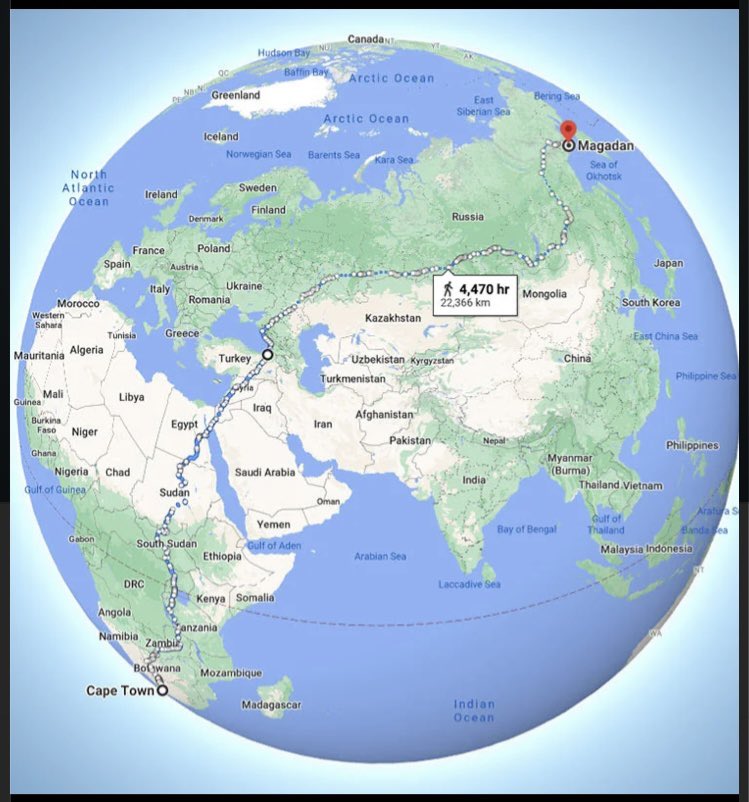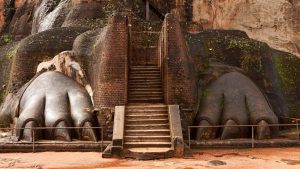
Walking has long provided humankind a cherished manner of connecting with nature’s splendors, traversing new landscapes, and embarking upon personal journeys of revelation. While renowned trails wind across the globe, from the verdant Appalachians of the United States to Spain’s storied Camino de Santiago, one route stands without equal in its epic proportions and ambition of scope: the Pan-American Highway.
Tracing the whole sweeping expanses of North and South America, this extraordinary path presents a once-in-a-lifetime experience for those daring enough to undertake its full distance. In the following comprehensive examination, we will delve into intricate particulars of the Pan-American Highway, chronicling its history, surveying the diverse terrains it transverses, and conveying the distinctive encounters it offers to intrepid ramblers.

The Genesis of the Pan-American Highway
The Pan-American Highway was first envisioned at the Fifth International Conference of American States convened in 1923. It was conceived as an amalgamated unit of roads linking the peoples of the Americas and fostering trade, tourism, and cultural exchange. The highway runs from the tip of America in Alaska in the North Pole to the southernmost prominence in Argentina. The striking distance amounts to roughly 19,000 miles or 30,000 kilometers.
Although originally intended for vehicles, the expressway has become a cultic path among hikers as the most prestigious long-distance pathway. The pan-American highway is not a single road but the total collection of multiple highways and tracks spanning from the arctic steppes and dense forests to sandy deserts and humid tropical rainforests.
The Route: From Prudhoe Bay to Ushuaia
The two termini of the Pan-American Highway are Prudhoe Bay in Alaska and Ushuaia in Argentina, known as the “End of the World.” Panama City, as previously stated, is the theoretical point at which the two roads intersect. The road passes through a vast variety of climates, cultures, and ecosystem types, all of which constitute a totally unique once-in-a-lifetime experience for pedestrians. Here, I will deconstruct the route into major segments and outline what each portion has to offer similarly to the table of contents for a book.
The Northern Leg: Alaska to Central America
The journey starts from Prudhoe Bay which is a small town situated on the northern coast of Alaska. Walkers then head south through the rough-hewn, unspoiled vistas of the state, including a passage through the Arctic Circle and the world-famous Denali National Park. Cold weather and encounters with grizzlies, moose, and caribou in the brutal wild of Alaska characterize the first part of this journey. Walkers will continue heading south and cross the Canadian border into the Yukon Territory and British Columbia in Canada’s relevant section.
With its fast-paced journey through the majestic Rocky Mountains to the scenic Pacific Northwest coast, Canada’s section of the Pan-American Highway offers a blend of scenic wilderness and challenging wilderness. They lunatogel walk cross the US line southward, navigating the Pacific Coast Highway, cutting through Washington, Oregon, and California states. The southern part also includes the Golden Gate Bridge in San Francisco in Southern California’s redwood forests.
The weather becomes more mesophilic as walkers continue to head down, including stunning vistas and picturesque coasts like the vibrant coastal city of San Diego. The journey takes a turn when walkers arrive in Mexico, with deserts of Baja California and Mexico City and Guadalajara featuring life hustle, bustle, and throwbacks. Tourists can meet ancient civilizations in the Yucatán Peninsula at Mayan ruins and find a touch of history in the heartland’s culture.
The Central American Leg: Mexico to Panama
Leaving Mexico, walkers quickly enter Central America, which is full of rainforests, volcanoes, active in most of the region, and cultures united by the Spanish colonial influence. It includes Guatemala, El Salvador, Honduras, Nicaragua, Costa Rica, and Panama. In Guatemala, everyone is welcome to visit the rainforest and see the ruins of the Mayan city Tikal, which is inscribed on the UNESCO World Heritage List. The El Salvador stage passes along the volcanoes, and in Nicaragua, one can visit incredibly azure lakes and bright colonial cities.
Costa Rica is a haven for eco-tourists and lovers of biodiversity; cloud forests and wild animals of various species will not leave anyone indifferent. Panama, in turn, offers a short visit to the Panama Canal and an external examination of the capital Panama City. The Darien Gap is the most dangerous section of the Pan-American Highway. The section of the jungle between Panama and Colombia is impossible to walk safely – the forest covers swamps, crocodile-infested rivers, and hostile insects.. Since the highway is not officially established, most travelers either bypass that part by sea or go around by plane.

The South American Leg: Colombia to Argentina
After walking through the Darien Gap, walkers finally enter South America through Colombia. This part of the journey is one of the most diverse and beautiful, taking the travelers through the vibrant cities and picturesque coffee plantations to the Andes. The walkers then proceed to Ecuador, which offers the Galápagos Island and its capital, the historical Quito. In Peru, the travelers explore the majestic Machu Picchu and the Sacred Valley, as well as Lima, the country’s capital.
Bolivia offers its high-alpine challenge and the Uyuni Salt Flats. In Chile, the walkers pass through the Atacama Desert and arrive in Santiago. Argentina begins with the Patagonia – its scenic ancient icefields and wildlife. In Ushuaia, the southernmost city globally, the Pan-American Highway ends, forcing the walkers to reflect on the epic journey’s endurance.
The Challenges of Walking the Pan-American Highway
Walking the entire length of the Pan-American Highway is not for the faint of heart. The journey presents numerous challenges, both physical and logistical, that require careful planning, resilience, and adaptability.
Physical Challenges
The sheer length of the Pan-American Highway means that walkers must be prepared for a marathon journey that can take several years to complete. The diverse climates and terrains encountered along the way demand physical endurance and the ability to adapt to extreme conditions. From the freezing temperatures of the Arctic Circle to the scorching heat of the Atacama Desert, walkers must be equipped to handle a wide range of weather conditions.
Altitude is another significant challenge, particularly in the Andean regions of South America. Walkers will need to acclimatize to high altitudes to avoid altitude sickness and ensure their safety. The rugged terrain, including mountains, deserts, and jungles, adds to the physical demands of the journey.
Logistical Challenges
Navigating the Pan-American Highway requires meticulous planning and coordination. Walkers must carefully plan their route, taking into account visa requirements, border crossings, and the availability of food and water. Some sections of the route, such as the Darien Gap, lack infrastructure and pose significant risks, necessitating alternative transportation methods.
Safety is a paramount concern, particularly in regions with political instability or high crime rates. Walkers must stay informed about local conditions and take precautions to protect themselves. Reliable communication and access to emergency services are essential for ensuring safety along the route.
The Rewards of the Journey
Despite the numerous challenges, walking the Pan-American Highway offers unparalleled rewards. The journey provides an opportunity to experience the natural beauty and cultural diversity of the Americas in a way that few other experiences can match.
Connection with Nature
Walking through the varied landscapes of the Pan-American Highway allows for an intimate connection with nature. From the pristine wilderness of Alaska to the lush rainforests of Central America and the majestic mountains of South America, walkers can immerse themselves in the natural wonders of the continent. The journey offers countless opportunities for wildlife encounters, breathtaking vistas, and moments of solitude in nature.
Cultural Immersion
The Pan-American Highway passes through dozens of countries, each with its own unique culture, history, and traditions. Walkers have the chance to interact with local communities, learn about their way of life, and experience their hospitality. The journey provides a deep and meaningful cultural immersion that fosters a greater understanding and appreciation of the diverse peoples of the Americas.
Personal Growth and Fulfillment
Undertaking a journey of this magnitude is a transformative experience that challenges walkers physically, mentally, and emotionally. The journey fosters personal growth, resilience, and a sense of accomplishment. Walkers learn to overcome obstacles, adapt to changing conditions, and appreciate the simple pleasures of life. The experience of walking the Pan-American Highway leaves a lasting impact, shaping one’s perspective and enriching one’s life.

Notable Walkers of the Pan-American Highway
Over the years, several adventurers have taken on the challenge of walking the Pan-American Highway. Their journeys have inspired others and demonstrated the possibilities of human endurance and determination.
George Meegan
One of the most famous walkers of the Pan-American Highway is George Meegan, a British adventurer who completed the journey between 1977 and 1983. Meegan’s walk covered 19,019 miles (30,608 kilometers) from Tierra del Fuego in Argentina to Prudhoe Bay in Alaska. His journey, documented in his book “The Longest Walk,” remains one of the most remarkable feats of long-distance walking.
Holly “Cargo” Harrison
In more recent years, Holly “Cargo” Harrison, a retired U.S. Army officer, walked from Ushuaia, Argentina, to Prudhoe Bay, Alaska. Harrison’s journey, which he completed in 2017, spanned 17,300 miles (27,842 kilometers) and took 530 days. His adventure highlighted the enduring appeal and challenges of walking the Pan-American Highway.
Preparing for the Journey
For those inspired to undertake the journey of walking the Pan-American Highway, thorough preparation is essential. Here are some key considerations for planning and embarking on this epic adventure.
Physical Preparation
Training for the journey is crucial to building the necessary endurance and strength. Walkers should engage in regular physical exercise, including long-distance walking, strength training, and cardiovascular workouts. Preparing for different climates and terrains will help ensure that walkers can handle the physical demands of the journey.
Gear and Equipment
Selecting the right gear and equipment is vital for a successful journey. Essential items include durable footwear, weather-appropriate clothing, a reliable backpack, navigation tools, and camping gear. Walkers should also carry essential supplies such as food, water, first aid kits, and communication devices. Investing in high-quality gear can make a significant difference in comfort and safety.
Route Planning
Careful route planning involves researching the Pan-American Highway, identifying key points of interest, and mapping out a feasible itinerary. Walkers should consider factors such as visa requirements, border crossings, and the availability of accommodations and supplies. Flexibility is important, as unexpected challenges and opportunities may arise along the way.
Safety and Health
Ensuring safety and maintaining health are paramount during the journey. Walkers should stay informed about local conditions, avoid high-risk areas, and take precautions to protect themselves from potential hazards. Access to medical care and emergency services is crucial, and walkers should carry necessary medications and health supplies. Staying hydrated, eating nutritious meals, and taking regular rest breaks will help maintain physical well-being.
Conclusion: A Journey of a Lifetime
Walking the Pan-American Highway is more than just a physical challenge; it is a journey of a lifetime that offers profound rewards. The experience of traversing the length of the Americas, encountering diverse landscapes and cultures, and pushing the limits of human endurance is unparalleled. For those who dare to undertake this epic adventure, the Pan-American Highway promises a transformative and unforgettable experience. If you enjoyed reading this article, please consider exploring our detailed piece on another monumental path: the Great Wall of China.








